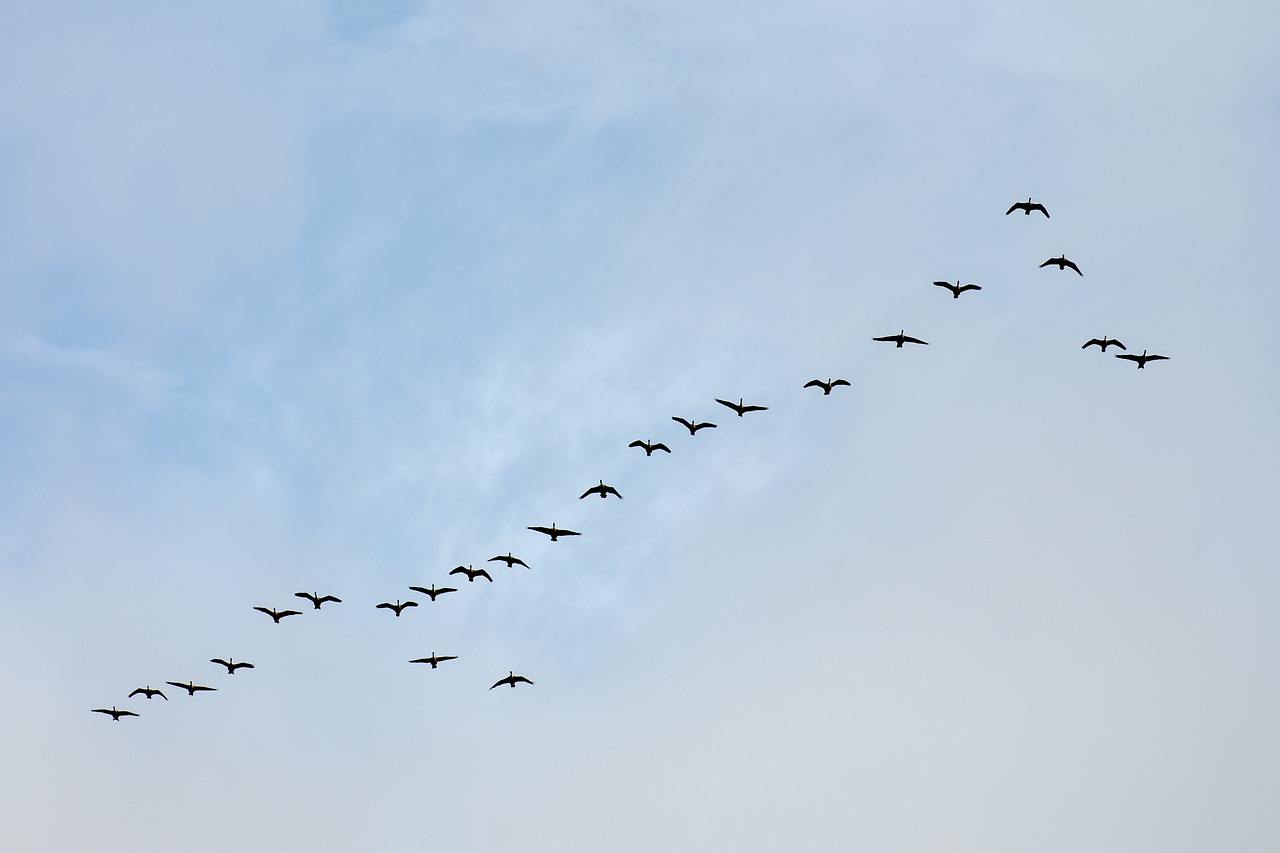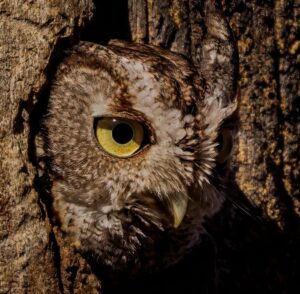by Christy Rybka
In fall, more than 650 species of North American birds migrate from their summer breeding homes to their winter nonbreeding grounds. While some travel very short distances to reach their winter homes, others travel tens of thousands of miles in one trip! To reach their winter homes successfully, many birds must face severely hazardous conditions and extreme physical challenges along the way.
Why do birds migrate?
After chicks have fledged and resources have decreased, many birds leave their summer homes to overwintering sites to find food, water, and shelter.
How do birds prepare for migration?
Although many birds make stops along the way, some migrating birds can travel thousands of miles at one time without stopping! To accomplish this amazing physical feat, migrating birds require plenty of energy for their journeys.
At the end of each summer, birds gorge themselves with large quantities of food to prepare for migration. This process, which is known as hyperphagia, increases the bird’s fat supply, which it later uses for energy during its long flight.
To prepare for migration, many birds also experience remarkable physical adaptations to help them through their long flights. After adding plenty of fat to provide much needed energy during migration, migrating birds also transform the composition of their bodies by growing and shrinking their internal organs! This process, which is known as autophagy, not only helps birds make room for all the extra fat that their bodies need, but also helps them maximize their energy expenditure by increasing the size of their hearts and chest muscles!
How do birds know when it is time to migrate?
Changes in length of day, temperature, resources, and genetic predisposition all indicate that it is time for birds to begin migration.
How do birds navigate their long journeys?
Research has shown that migrating birds tend to follow the same route to their winter homes each year. Amazingly, even birds who are migrating for the first time are able to find their overwintering grounds, despite the fact that they have never been there before.
Although researchers do not fully understand how birds navigate thousands of miles to the same location each year, researchers have discovered that birds use the position of the sun, moon, and stars to help them navigate. Other factors, including landmarks and the earth’s magnetic field, can also help birds navigate their long journeys.
Do all birds follow the same migration routes?
Not all bird migration patterns are the same. The Arctic Tern, which has one of the longest migration patterns of any animal on earth, travels from the Arctic Circle to the Antarctic Circle, adding up to a journey of 18,641 miles round-trip! Other birds travel shorter distances. For example, the American Woodcock travels from Canada, Maine, and the Great Lakes region to southern states, including the Carolinas, Florida, Texas, and others.
The Sandhill Crane, which can be seen flying over Creasey Mahan Nature Preserve twice each year, travels from its breeding grounds in Canada and Alaska to its overwintering sites in Mexico, Texas, and south Florida.
Have you ever wondered where hummingbirds go in the winter? The Ruby-Throated Hummingbird, which is commonly seen in Kentucky each summer, leaves North America to overwinter in Mexico, Costa Rica, and Panama each fall. A small number may overwinter in southern Florida.
- Long-distance migrants: Long-distance migrants are birds that can travel up to tens of thousands of miles across continents in one trip.
- Medium-distance migrants: Medium-distance migrants are birds that travel up to a few hundred miles.
- Short-distance migrants: Short-distance migrants are birds that travel very short distances, less than a hundred miles in total.
- Longitudinal and latitudinal migrants: Although most birds migrate longitudinally (from colder, northern regions to warmer, southern regions), some birds also migrate latitudinally (from inland areas to the shore) and altitudinally (from areas of high elevation to areas of low elevation).
- Durations: While some birds make fast, short trips, other birds make long, slow trips with several stops along the way.
Is there anything humans can do to help birds successfully migrate?
Some birds complete their journeys without stopping, but many make “pit stops” to “refuel” with food and water. You can help by keeping your bird feeders clean and filled with high-calorie food, such as suet and seed blends. Providing water can also be helpful, but be sure to monitor the temperature of the water so it does not freeze. Consider purchasing a heated bird bath or an accessory that can be added to your bird bath to prevent freezing.
Many birds that depend on light from the sun, moon, and stars to navigate have been harmed, and even killed, as a result of light pollution. At night, please turn off as many lights outside your home as possible. This will help birds (and insects, like moths) navigate without the confusion of artificial lighting.
If you are interested in tracking the migration of birds near you, BirdCast offers a live bird migration map that is updated daily. The Louisville Audubon Society also offers education and events for those who are interested in learning more.
The Basics of Bird Migration: How, Why, and Where | All About Birds All About Birds
Five Incredible Ways Birds Change Their Bodies for Spring and Fall Migration | Audubon


